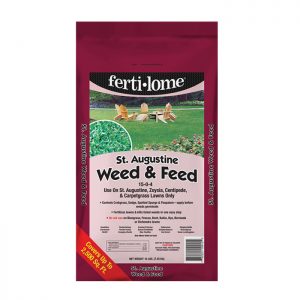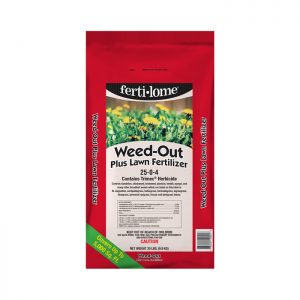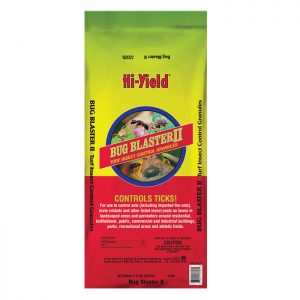Lawn Care
Thankfully, this summer has not been an outrageously wet one, however, at the Garden Center, we are seeing some common problems:
Firstly, we are seeing lots of fungal disease- mostly Take-All Root Rot. This fungal disease is usually triggered by high rainfall and stressed turf areas. Stresses can be mowing too short (no more than 1/3 of the grass should be cut and only as needed); over fertilizing; and by over watering. Of course, with the amount of rain we have had lately, over watering is difficult to control. First symptoms are irregular yellow or light green patches, with isolated black lesions. Eventually the roots become short, black and rotted.
Fungicides are somewhat of a help, however, fungicides are not as effective as the use of cultural controls once the disease symptoms are observed. These fungicides are best used preventively, meaning they must be applied prior to symptom development. Fungicides can be applied at least one month prior to the time when aboveground symptoms are normally observed. Application should continue once a month until the weather is no longer conducive to disease development. These fungicides should be lightly watered into the root zone immediately after application.
Secondly, we are seeing damage from Sod Webworm. You may see evidence of these bugs before you see them as they feed at night and hide in the blades during the day. For this reason, damage seems to appear literally overnight. Signs of damage include areas of ragged grass blades that are shorter than other areas of the grass, thinning of the lawn (fewer leaves), and eventually brown patchy areas. A clue to Sod Webworm is also the swarms of white moths that will fly around when you walk through the grass. They are not what is causing the problem rather, the larvae that they hatch in the grass.
Sod webworm damage usually rights itself if you grass is not stressed or unhealthy already. However, if required, use a pesticide labeled for this bug problem.
Thirdly, we are seeing lots of mushrooms in people’s yards. The mushrooms are most observed during the summer months. It is during this time of year when Florida receives most of its rainfall. Mushroom clumps occur when large quantities of organic matter, such as lumber, tree stumps, and logs, are naturally located or have been buried in a lawn. The fungi are nourished and develop on this material. The mushrooms, which can be all sizes and shapes, are the fruiting stages of these fungi. These mushrooms can be mowed over or removed by hand. Some, but not all, are relatively harmless so if you have pets that are in the yard, removing as the appear would be your best option.
October is a key month for lawn care as many lawns are stressed from the summer. See the lawn care guide for this month below. Fall is a good time to sod or use plugs to fill in bare areas as well. In shaded areas that do not support good grass, consider using shade tolerant ground covers or mulch to finish the areas.
St. Augustine & Zoysia Grass
Ferti-lome Weed & Feed
Apply this product at the END of October. Ferti-lome Weed & Feed should be applied to a lawn that has been moistened prior to application. It contains the active ingredient Atrazine, which should take care of all of your pesky broadleaf weeds such as dollar weed, oxalis, chickweed, and dandelion. After applying Weed & Feed make sure to water it in well. This activates the Atrazine and allows it to do its work on your weeds. This product is used for pre-emergent control and post-emergent control of weeds.
Bahia Grass
Ferti-lome Weed-Out Plus Fertilizer
Fertilome Weed-Out provides excellent post-emergent broadleaf weed control on cool and warm season grasses. Lawn should be slightly wet before application, but do not water for 24 hours after application. Contains three weed killers to stop Dandelions, Spurge, Dollar Weed, Wild Onion, Chickweed, Clover and over 200 broadleaf weeds, which are listed on the label.
Hi-Yield Bug Blaster II
Hi-Yield Bug Blaster II Bifenthrin Granules control a broad spectrum of lawn, landscape, and perimeters pests around home and buildings. These water-dispersible granules control fleas, ticks, chinch bugs, mole crickets, scorpions, fire ants, and many more. Use in landscapes and for perimeters around residential, institutional, public, commercial, and industrial buildings, in parks, recreational areas, and athletic fields. Hi-Yield Bug Blaster II Granules contain Bifenthrin, the same active ingredient as Talstar PL and Talstar EZ granules.
*Notes on weed and feed products:
Many people are confused about weed and feed products. Often, it is assumed that weed and feed products will kill your weeds and feed your lawn. To some extent, this is correct, however, the weed component of these products is a PRE-emergent which will kill any dormant weeds in your grass NOT EXISTING. If you have existing weeds you need to use a POST emergent weed killer as PRE-emergent will not do anything to eradicate them. Over time, however, by using pre-emergent weed killers, the number of weeds that appear will be lessened. Weed and Feed as well as Weed Out does have a small component for both however, if you have a lot of weeds existing, you may require a product that is post-emergent.


